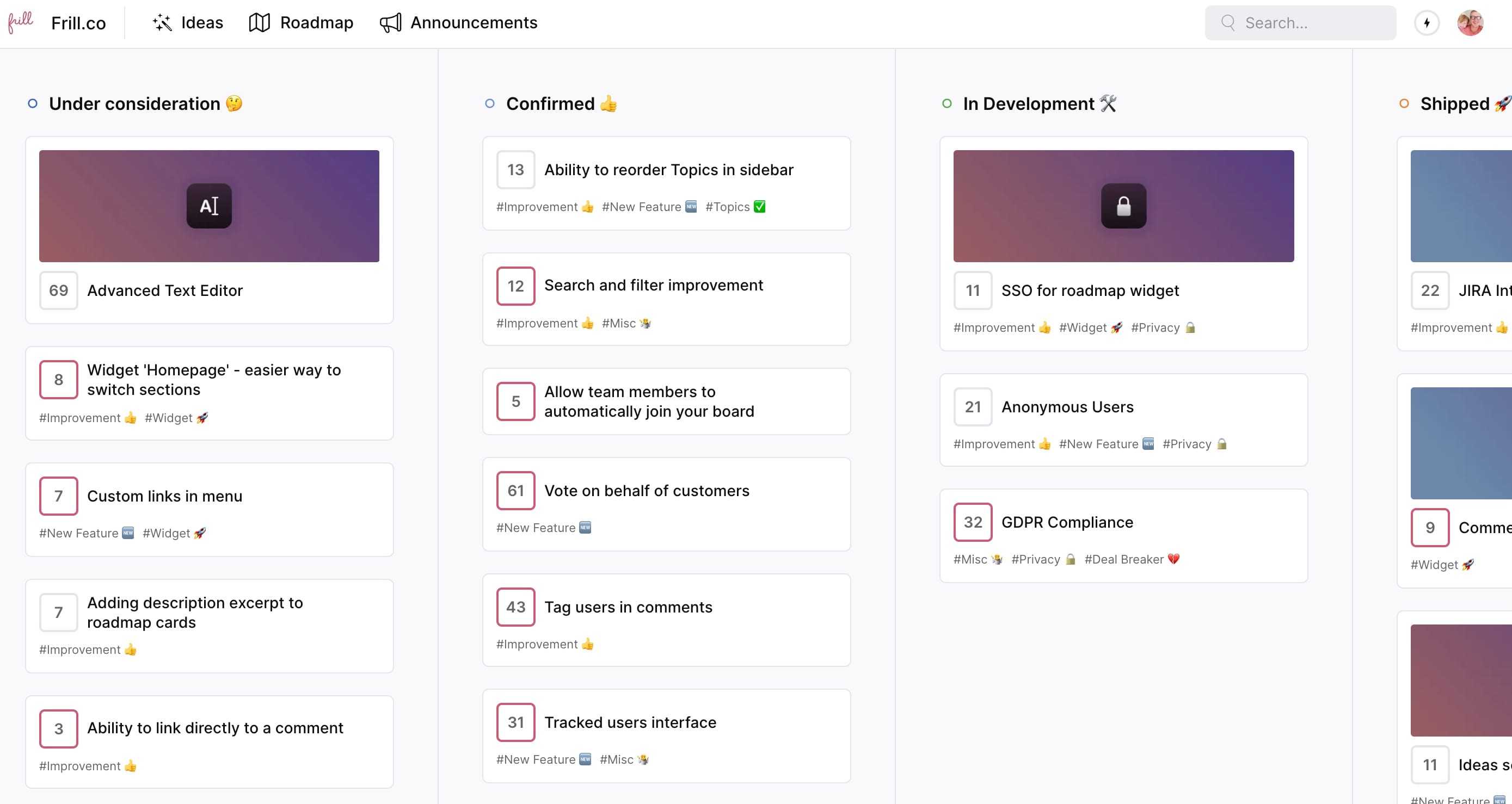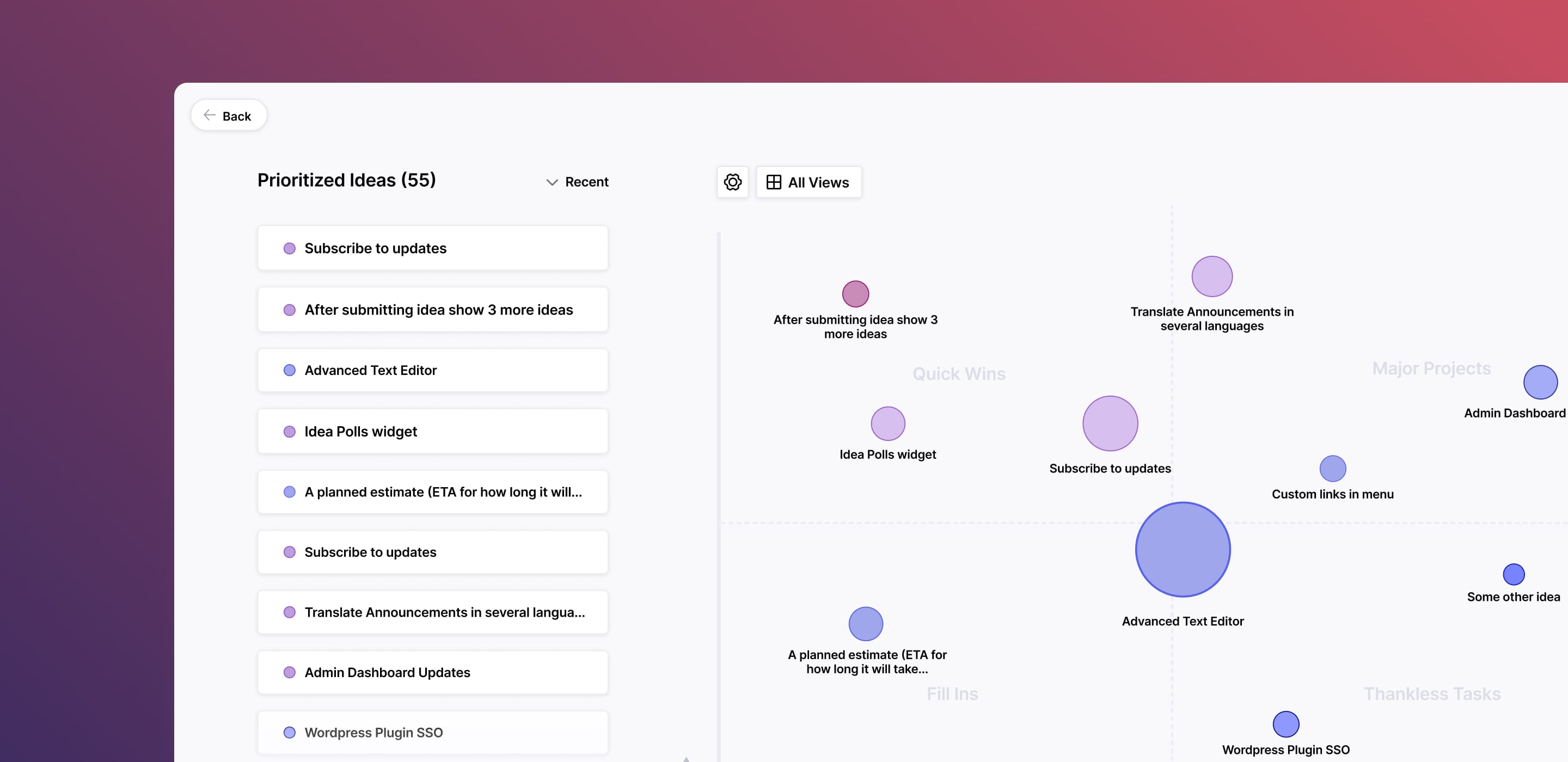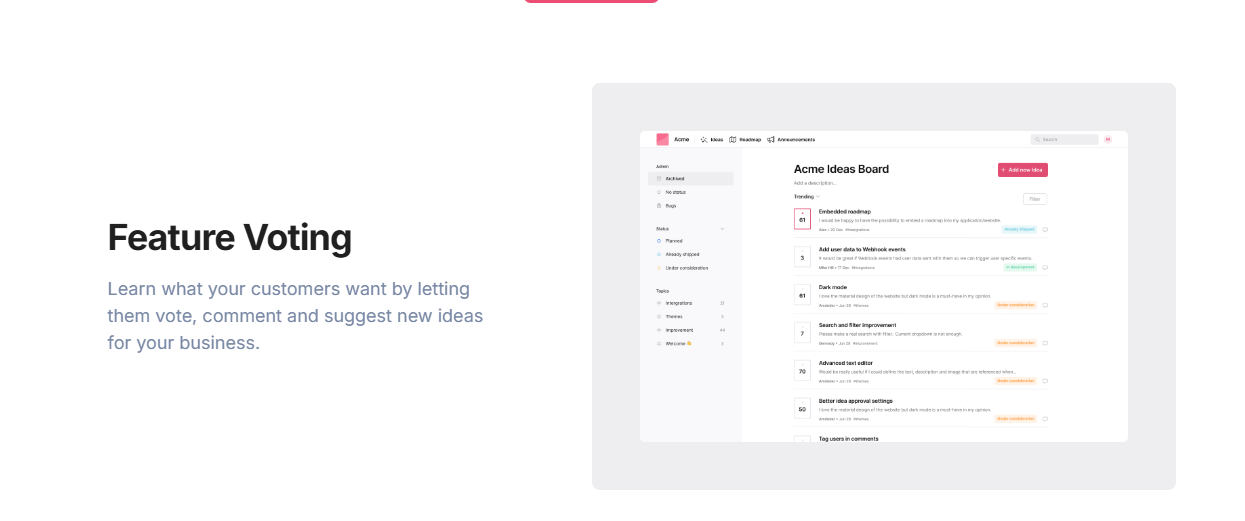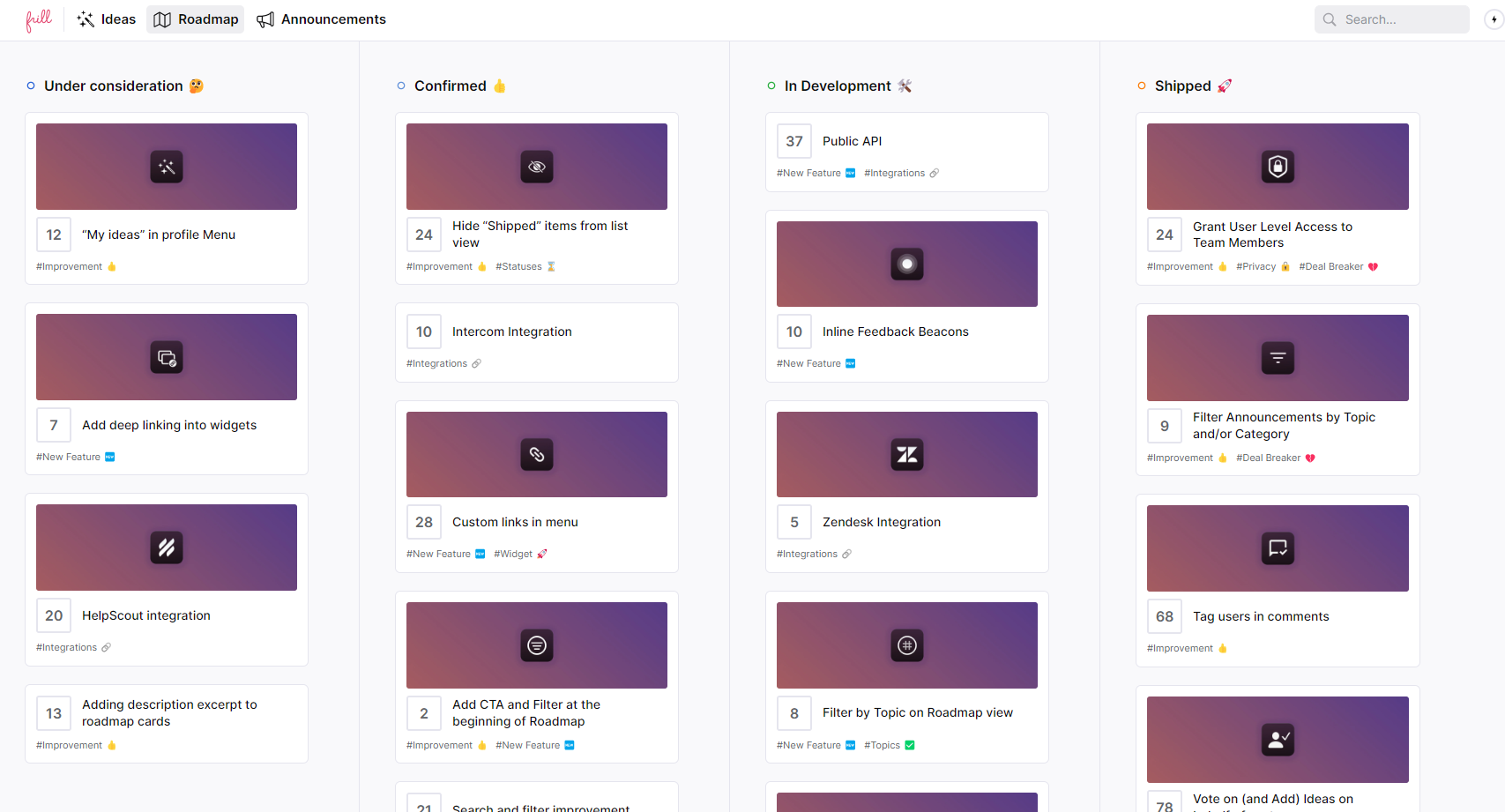How to Organize Customer Feedback in 9 Effective Steps
Last updated on Mon Dec 30 2024
Ok, so you’ve taken the first step by collecting feedback from your customers.
Now what?
You know not all feedback is created equal, and there’s a really good chance of some repeats buried deep in the stack. So how do you go about managing it all?
Organize!
Organizing customer feedback is a critical skill for any business— especially for SaaS companies. Businesses that effectively manage and act on feedback can outpace competitors and build lasting customer loyalty.
This post explores why feedback organization matters, actionable steps to get started, and the tools and methods that make it all possible. So let’s dive in.
Why is organizing user feedback so important?
Organizing and categorizing feedback is essential for businesses striving to stay customer-centric. Without structure, valuable insights can be overlooked, leading to missed opportunities for improvement. Here are the key reasons why organizing feedback matters:
Identifying trends and patterns
Streamlining decision-making.
Aligning teams across the business
Improving customer satisfaction
Driving product and service innovation
Tracking progress and impact
The pivotal role of feedback in SaaS startups
In the hyper-competitive SaaS environment, feedback isn’t just helpful—it’s survival. Companies that integrate feature requests, public roadmapping, and rapid iteration into their core operations position themselves not only to meet user expectations but to exceed them. For startups, this isn’t optional; it’s the standard that customers demand.
The SaaS landscape thrives on adaptability, and continuous feedback loops have become a requirement for success. If you’re still not convinced here's a more detailed breakdown of why:
Feature requests fuel product evolution - Customers expect to be heard. Feature requests are a direct line to understanding what users want, need, and expect.
Public roadmapping builds transparency and trust - Having a public roadmap has become the expected norm. It signals that you’re listening, that user voices matter, and that there’s a clear plan for growth.

Feature launches reflect customer-centricity - Launching features that directly address user needs demonstrates that your startup is not only innovative but also deeply customer-focused.
Feedback loops drive continuous improvement - SaaS startups that embrace continuous feedback loops—collecting, analyzing, and implementing feedback on an ongoing basis—are better positioned to adapt to market shifts and outpace competitors.

9 steps for effective customer feedback organization
Now that we have established the importance of having organized feedback, let's dive into the steps for success. And, don’t forget that there are plenty of great feedback tools to help you with this.
1. Centralize all feedback in one place
Gather feedback from all channels—email, surveys, social media, customer support, and live chats—into a single location. Centralized feedback collection ensures nothing falls through the cracks and simplifies the organization process.
2. Categorize feedback by themes
Group similar feedback into categories or tags based upon the type of feedback it is. These can be feature requests, bug reports, usability issues, or praise. This organization makes it easier to identify patterns and trends, and establish priorities.
3. Prioritize based on impact and feasibility
Use a systematic approach to assess the importance of feedback. Rank items based on their potential impact on your customers and how feasible they are to implement.

One effective method is a feature prioritization matrix. Here, all your feedback is organized based on a set of key metrics and visually displayed for easy identification.
4. Involve the right stakeholders
Share organized feedback with relevant teams—product, design, marketing, or customer success. Clear ownership is essential for transforming the feedback into actionable insights that align with your business goals.
Stakeholder involvement with the organized feedback also plays into developing a clear product vision that can inspire and engage.
5. Translate feedback into actionable insights
Break down feedback into specific, actionable tasks or objectives. For example, instead of “Improve onboarding,” identify exact pain points to address, such as “Add a progress tracker to onboarding steps,” or use a speech to text app to quickly convert verbal user interviews into written feedback for analysis.
6. Keep feedback updated and transparent
Regularly review and update the status of feedback—marking items as planned, in progress, or completed. Transparency builds trust with your customers and keeps your internal teams aligned.
This regular review is also a great time to implement your ranking metrics to the feedback so it is ready to join the masses in your prioritization matrix.
7. Leverage feedback to inform your roadmap
Use customer insights to guide product development and prioritize roadmap features. Including feature voting is a great way to leverage your feedback as well. This allows your users to vote and comment on suggestions from others which results in a compound effect and simplifies your organization requirements.

8. Close the loop with customers
Always acknowledge customer feedback and let them know how their input was used. Whether the feedback was implemented, planned, or deemed not feasible, closing the loop strengthens your customer relationships.
And, yes it is ok to tell them you are not using their feedback. Just be polite about it and if you can provide a reason why.
9. Measure and refine your process
Evaluate how well your feedback organization process works and adapt as needed. Regularly check for bottlenecks, missed insights, or opportunities to improve efficiency.
Make sure you schedule this review time into your calendar. The frequency really depends on the amount of feedback you get. Try monthly and then adjust from there.
10 organization methods for customer feedback analysis
In addition to the steps of feedback organization there are different organization methods for customer feedback strategy and analysis. Here are some common methods to analyze feedback.
1. Tagging and categorization
Assign tags or categories to every piece of feedback to group similar themes. For example, you can tag feedback as "feature request," "bug report," or "general praise." This makes it easy to filter and analyze specific types of input.
2. Feedback boards
Use a centralized board or kanban-style system to track feedback throughout its lifecycle. Create columns such as “New feedback,” “Under review,” “In progress,” and “Completed” for visual clarity and seamless tracking.

3. Weighted prioritization frameworks
Adopt a scoring system, such as the RICE (reach, impact, confidence, effort) or MoSCoW (must have, should have, could have, won’t have) frameworks, to objectively evaluate feedback and determine its importance.
With Frill, setting up your prioritization framework is simple and straightforward.The process is divided into benefit and cost factors where you can add any number of different sub-factors you want to consider. And you can give them individual weights. Then when you select feedback on the board you can directly assign the priority values of your defined factors.
4. Customer segmentation
Organize feedback based on customer personas or segments. For instance, group feedback from power users, first-time users, or enterprise customers to tailor solutions that fit specific needs.
5. Time-based feedback analysis
Break feedback into time periods (weekly, monthly, quarterly) to track how customer priorities and pain points evolve. This method helps you identify recurring issues and seasonal trends.
6. Collaboration tools
Leverage tools that allow teams to collaborate on feedback, share notes, and communicate directly within the system. This reduces silos and ensures everyone stays informed.
7. Sentiment analysis
Incorporate sentiment tagging to distinguish between positive, neutral, and negative feedback. That way teams can quickly address critical issues or celebrate wins highlighted by customers. This also saves a ton of review time which you’ll greatly appreciate when the feedback really starts growing.
8. Automated sorting and alerts
Use automation to classify and prioritize feedback. For example, set rules to flag feedback containing keywords like “urgent” or “issue” for immediate attention, or auto-categorize based on predefined criteria.
9. Feedback heatmaps
Visualize trends in feedback by frequency or category. Heatmaps can highlight which features or areas are generating the most attention, helping you focus on high-impact opportunities.
10. Integration with product roadmaps
Tie organized feedback directly into your product roadmap or backlog. This makes sure that valuable insights inform decision-making and maintain alignment between feedback collection and action.
Frequently asked questions (FAQ)
1. How do I collect customer feedback?
You can collect customer feedback using surveys, feedback forms, email outreach, live chat, social media, and in-app tools. Be consistent across channels and make it easy for customers to share their thoughts with clear prompts and user-friendly interfaces.
2. What types of customer feedback are there?
Common types include feature requests, bug reports, usability feedback, satisfaction ratings, testimonials, and complaints. Feedback can be categorized as qualitative (descriptive insights) or quantitative (numerical data like ratings or scores).
3. Which types of customer feedback strategies are best for my business?
The best strategies depend on your goals and audience. Use surveys for quantitative insights, interviews for deep qualitative feedback, or in-app prompts for feature-specific feedback. Test multiple strategies to see what resonates with your customers.
4. How do I organize the customer feedback I’ve collected?
Organize user feedback by tagging or categorizing it by themes, such as product issues or feature requests. Use tools that centralize data and provide filters, enabling you to analyze trends and make data-driven decisions.
5. What is the best way for prioritizing feedback I’ve collected?
Use prioritization frameworks like RICE (reach, impact, confidence, effort) or MoSCoW (must have, should have, could have, won’t have) to evaluate feedback objectively. Focus on ideas that bring high value to your customers and align with your business goals.
6. Is there a way to centralize feedback collection?
Yes, you can use customer feedback platforms, CRM systems, or product management tools to centralize feedback from multiple channels. This ensures all feedback is stored in one place for easy access, analysis, and action.
7. What is a customer feedback loop?
A customer feedback loop involves collecting, analyzing, and acting on customer feedback, then communicating the outcomes back to customers. It’s a continuous process that builds trust, improves products, and fosters stronger customer relationships.
Ready to start organizing your feedback and make your customers happy? Track, organize, and prioritize customer feedback and feature requests with Frill.